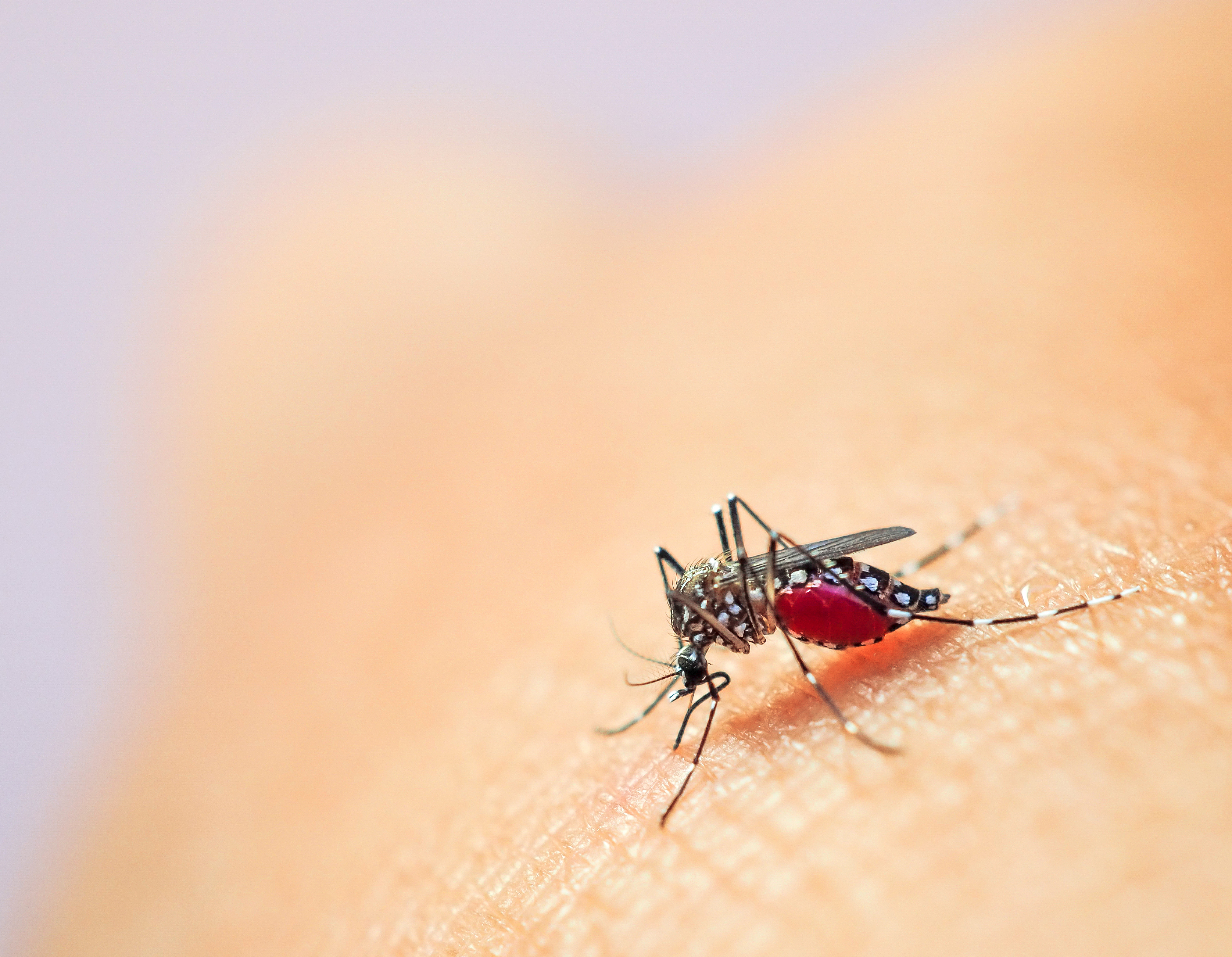By Jacqueline Teoh, Senior Epidemiologist, National Public Health and Epidemiology Unit, National Centre for Infectious Diseases

Despite intensive vector control, there has been a significant increase
in the number of dengue cases in recent years. In fact, in 2020, a resurgence of epidemic dengue was observed during the COVID-19 pandemic with the highest ever annual incidence reported in Singapore.
We had seen a drastic drop in dengue cases in 2017 and 2018. However, the number of dengue cases recorded in 2019 exceeded the total number of cases in 2018. A sharp upward trend was observed in 2020 and reached its peak in July 2020. A total of 35,315 dengue cases were reported in 2020, almost two times the number for 2019. The incidence rate (IR) of 621 per 100,000 population, was higher than the annual IRs reported from 2014 to 2019. The upward trend in dengue cases and incidence rate coincided with the increase in the population of the Aedes aegypti mosquito since 2017. Last year, the National Environment Agency (NEA) found 23,400 mosquitoes breeding habitats.3,5
In 2021, the number of dengue cases has remained relatively stable for the first six months of the year (Figure 1).
![[Pg 8 and 9] Figure 1 Dengue Surveillance in Singapore 2015 - 2021.tif](/Health-Professionals/Articles/PublishingImages/Pages/Epidemic-Dengue-in-Singapore-During-COVID-19-Pandemic/[Pg%208%20and%209]%20Figure%201%20Dengue%20Surveillance%20in%20Singapore%202015%20-%202021.tif)
Figure 1: Dengue Surveillance in Singapore, 2015 - 2021
Why Singapore suffered the largest dengue outbreak in 2020 despite vector controls
Singapore is an ideal environment for mosquito breeding with high temperatures and high humidity. It is a densely populated city with a total land area of 728.6 square kilometres and over 5.6 million people, and building boom and population growth have caused the increase in dengue cases. Three million of Singapore residents live in HDB flats and this increased human population density aided the spread of dengue.4
Between 2014 and 2017, there was a general trend of decline in dengue case numbers but rose steeply from 2018 to 2020.
In 2014, the predominant serotype was DEN-1 (79%) but switched to DEN-2 from 2015 onwards (45%). Although DEN-2 continued to be the predominant serotype in Singapore from 2015 to 2020, the proportion of DEN-3 and DEN-4 cases had increased from 2014 (3%, 0.2%) to 2020 (36%, 12%) (Figure 2). It was found that during the dengue outbreak in 2020 amidst COVID-19 pandemic, there was a change in circulating dengue virus strains. The rise of DEN-3 and DEN-4 contributed to the largest dengue epidemic, with a total of 35,315 cases and 32 deaths. Neither DEN-3 nor DEN-4 infected large numbers of people in the past. Vast majority of nonimmune population would be susceptible to DEN-3 and DEN-4, which contributed to more infections by these serotypes.5
![[Pg 8 and 9] Figure 2 Surveillance of Dengue Virus Serotypes 2014 - 2020.tif](/Health-Professionals/Articles/PublishingImages/Pages/Epidemic-Dengue-in-Singapore-During-COVID-19-Pandemic/[Pg%208%20and%209]%20Figure%202%20Surveillance%20of%20Dengue%20Virus%20Serotypes%202014%20-%202020.tif)
Figure 2: Surveillance of Dengue Virus Serotypes, 2014 - 2020
The most prominent environmental factors associated with dengue cases are humidity and warmer temperatures. The higher temperatures observed in 2019 and 2020 are a major concern of climate change in Singapore. In 2020, the mean relative humidity was >75% and four spurts (>80%) were observed in January, June, September and November. The first half of 2020 was hotter than the 30-year average, but it ended with lower temperature in June. Over the course of the year, the minimum temperature ranged from 23.1°C to 27.1°C (median = 25.5°C). The maximum temperature varied from 29.1°C to 33.5°C (median = 31.7°C). In addition, the peak of the dengue epidemic period was around June to August during the rainy season. Rainfall occurs all year round in Singapore, with peak rainfall and the highest monthly number of rainy days usually observed during Northeast Monsoon season from November to January.6
Dengue transmission in or near homes is another critical factor for dengue outbreak. The increase in work-from-home as part of COVID-19 safe management measures in 2020 increased the risk of bites by dengue-carrying Aedes species mosquitoes, which more commonly occurred at home1. Increase in number of indoor larvae breeding also contributed to the surge in dengue cases.2
Residents need to do their part to prevent mosquito breeding in their homes by doing the Mozzie Wipeout, as the most effective measure for keeping the mosquito population low is through detecting and removing mosquito breeding habitats. Fogging is only effective if mosquitoes come into direct contact with the chemical. This is in line with the NEA recommendations for vector control. Owners of premises are encouraged to ensure good housekeeping practices and undertake vector control measures such as checking their homes frequently for stagnant water and emptying any tools that collect water. Residents residing in dengue cluster areas, should carry out the three protective actions of ‘Spray, Apply, Wear’ which are – to spray insecticide targeting dark corners around the house, apply insect repellent and wear long-sleeve tops and long pants.7,8
References
1. Lim et al. Impact of Sars-CoV-2 interventions on dengue transmission. PLOS. 29 Oct 2020.
2. NEA. Number Of Weekly Dengue Cases Expected To Exceed The Historical High Of 891 Unless Urgent Collective Community Action Is Taken. 3 Jun 2020.
3. Communicable Disease Surveillance 2014-2018. Ministry of Health, Singapore.
4. Key Statistics HDB Annual Report 2019/2020. Housing & Development Board.
5. Quarterly Dengue Surveillance Data 2018-2021. National Environment Agency.
6. Air Quality and Climate 2015-2021. SingStat Table Builder. Department of Statistics Singapore.
7. NEA. Prevent Aedes Mosquito Breeding. Dengue & Zika. 29 April 2021.
8. NEA. Why can’t NEA just fog the entire island to kill adult mosquitoes? 12 May 2016.
The article was also published in Volume 1 of Infectious Disease Intelligence here.